Newsletter January 2017
 ICRH Global Newsletter ICRH Global Newsletter 27th of January, 2017
|
Marleen Temmerman is the new ICRH Global chair  During the general assembly of 27 October 2016, ICRH Gobal elected prof. Marleen Temmerman as the new chair. During the general assembly of 27 October 2016, ICRH Gobal elected prof. Marleen Temmerman as the new chair. Marleen Temmerman established ICRH more then 20 year ago at Ghent University. Under her leadership the sister organisations in Kenya and Mozambique were created, forming all together ICRH Global, of wich Marleen became the first chair person. Marleen stepped down from the board when she was appointed director of WHO-RHR, but re-joined after the end of her mandate there, in 2016, and she was enthusiastically re-elected as new chair, in replacement of Lou Dierick who chaired the board during the past four years. In her acceptance speech, Marleen thanked Lou for his work for ICRH Global and expressed her commitment to intensify communication and collaboration among the ICRH Global member organisations. |
| PROJECTS |
WHISPER/SHOUT ICRH Kenya is currently undertaking a study on Women’s Health Intervention Using SMS for Preventing Unintended Pregnancy (WHISPER) or SMS Intervention to Improve Nutritional Heath Outcomes (SHOUT). The cluster randomised controlled trial assessing mHealth interventions among female sex workers (FSW) in Mombasa, Kenya is a collaboration between ICRH Kenya and the Burnet Institute in Australia, along with collaborating investigators from other institutions. It is funded by the National Health and Medical Research Council of Australia. 860 eligible female sex workers (430 women per arm) will be enrolled from 86 female sex worker venues. Recruitment and screening by well-established peer outreach workers is ongoing at sex work venues and eligible participants randomised to receive either a 12-month sexual and reproductive health intervention or a 12-month nutritional health intervention via mobile phone. Enrolment commenced in September 2016. So far 198 eligible participants have been enrolled into the study with 83 receiving SRH messages and 87 receiving nutritional messages. 28 participants are currently waiting to be randomly allocated to either arm. Both the SRH and the nutrition intervention consist of SMS (text) messages being sent out to participants two to three times per week for 12 months. The messages consist of
Surveys (structured questionnaires administered electronically) and clinical assessments (urine pregnancy test, STI syndromic management, HIV and Syphilis rapid tests, haemoglobin assessment using haemoglobin meter and blood withdrawal for full haemogram) are being done at enrolment and will be done at 6 months and 12 months. Effectiveness assessment will be done for each of the interventions after 12 months with the other as the control group. As each intervention addresses a unique set of specific issues, and the delivery of the intervention is the same, they each form an appropriate control group. The study aims to improve the health and wellbeing of female sex workers in resource constrained settings. More specifically, this study aims to improve the sexual and reproductive health of female sex workers (as compared to women receiving a nutrition intervention), and improve the nutritional status of female sex workers (as compared to women receiving an SRH intervention). |
Gender norms and adolescent sexual and reproductive health 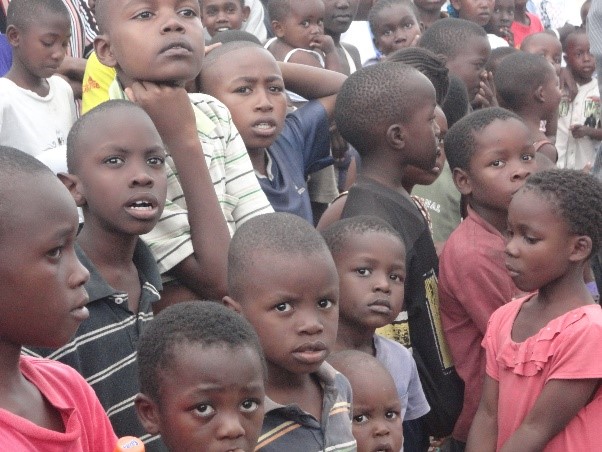 Implementation of the Global Early Adolescent Study in Belgium and South Africa. Implementation of the Global Early Adolescent Study in Belgium and South Africa.ICRH/Ghent University and the School of Public Health (SoPH) of the University of the Western Cape (UWC) will work closely together to implement the second phase of the Global Early Adolescent Study (GEAS) in the city of Cape Town (South Africa) and Ghent and Antwerp (Belgium). This study aims at investigating the associations between gender norms and early adolescents’ (sexual and reproductive) health. A survey will be conducted among 1400 adolescents, policy recommendations and interventions will be developed and there will also be training. The three-years project is jointly financed by the Research Foundation - Flanders (FWO) and the South African National Research Foundation (NRF). More information: Sara De Meyer, saraa.demeyer@ugent.be and Kristien Michielsen, kristien.michielsen@Ugent.be. |
Oral PrEP Bridging the gap in HIV prevention initiatives. ICRH Kenya in partnership with JPHEGO is implementing the Bridge to Scale (Jilinde program) aimed at bridging the gap in HIV prevention amongst key population in Mombasa, Kilifi and Kwale Counties of Kenya. PrEP will be introduced to the targeted population; this will provide an additional HIV prevention intervention. Studies have demonstrated high efficacy for both men and women assuming full adherence to a daily regimen. Oral PrEP was endorsed by the WHO in 2015 and Kenya as a country has included it in its revised ART guidelines of 2016. A launch of the Bridge to scale project was done in Mombasa County in November 2016, in which all strategic stakeholders were present to learn and appreciate the efforts being made to mitigate the impact of HIV by introduction of PrEP amongst HIV prevention combination efforts in the country. The project aims at reaching out to key populations in Mombasa, Kwale and Kilifi counties and at enrolling 5,000 people in 4 years to use oral PrEP to prevent HIV infection even as they continue to use other HIV preventive methods such as condoms. This is a step in the right direction and in line with the realization of the 90 -90-90 WHO goal of zero infections by the year 2020. |
EVENTS |
INPAC The INPAC Final Dissemination Conference has been successfully held from 13th to 15th January 2017 in Beijing. 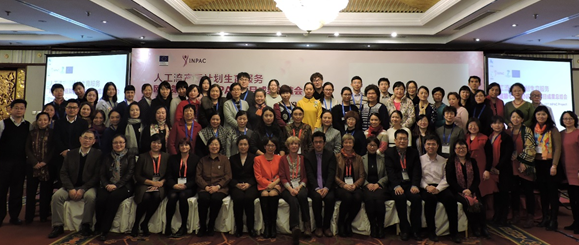 The conference gathered 7 consortiums with 32 members, 23 honourable guests, including the following national representatives: Mrs Wang(Deputy Director-General of Department of Maternal and Child Health of National Health and Family Planning Commission of China-NHFPC), Ms Han (Former Technology Counsellor of Chinese Embassy to Belgium), Mr Song(Deputy Director General of Center for Capacity Building and Continuing Education of NHFPC), Ms Hong (Vice secretary-general and Director of international co-operation of China Family Planning Association), Ms Peng (Beijing Municipal Institute for Drug Control). International guests were: Ms Petrova (Delegation of the European Union to China), Mr Zhang (Representative of Province of East Flanders and Ghent University of Belgium), Mr Peng and Mr Guo (Representative of United Nation Population Fund, China), Ms Zhang (Representative of World Health Organisation), Mr Tian (Representative of UNICEF) and many others from various healthcare organisations and institutions, along with INPAC’s Scientific Advisory Board and Policy Advisory Board members and representatives of participating hospitals from 30 Chinese provinces and media. The meeting was hosted by the Chinese Medical Association. The objectives were to disseminate the INPAC findings, to present policy recommendations based on INPAC’s evidence, and to discuss and plan future collaboration. During the meeting, Mrs Wang of NHFPC briefly introduced the on-going progress of Family Planning and Maternal Health in China and thanked INPAC for its contributions and hard work to improve China citizen’s health. Prof Temmerman greeted the participants via a recorded video and presented the world-wide situation regarding abortion and contraception. Afterwards, Ms Han, Mr Zhang and Mr Song shared their feelings about the INPAC project and their appreciation for the successful completion. Later on, INPAC’s project leader, Wei-Hong Zhang gave an overview of the INPAC project and its main findings Then the INPAC achievement highlights were presented. After the INPAC interventions aimed at integrating post-abortion family planning services into induced abortion services in hospitals setting, women’s modern contraceptive use after abortion increased, and the occurrence of unintended pregnancies and repeated abortion in women of childbearing age decreased. These findings have significant implications for the formulation and implementation of post abortion family planning (PAFP) service standards in China. This can contribute to positive social outcomes and to efficient protection of reproductive health rights of women of childbearing-age. A Chinese academic monograph named ‘Intervention Study of Post-Abortion Family Planning Services in China: Design and Implementation of the EU-FP7 INPAC project’ was published. The meeting received consistent high appreciation from the participants and from news medias. |
ICRH Kenya fun day  As is the norm, ICRH Kenya held their fun day in December 2016. As is the norm, ICRH Kenya held their fun day in December 2016.The fun day was integrated with the end year party where all staff attended. |
Successful launch of the ANSER network The ‘Academic Network for Sexual and Reproductive Health and Rights Policy’ (ANSER) has been kicked-off on 30 November 2016. The ANSER network unites 21 academic institutions from around the world and aims to become a 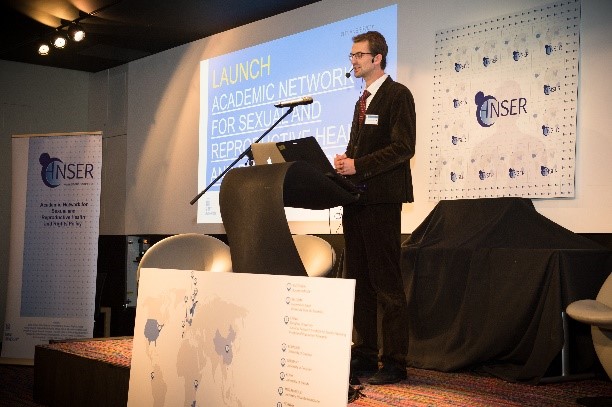 global resource for SRHR policy research, education and service delivery by establishing an international platform for research on SRHR policy related topics; by developing a portfolio of education and training programmes on SRHR policy; and by fostering interaction between SRHR researchers and policy makers. Speakers at the launch event included Elke Sleurs (Belgian State Secretary for Science Policy), Neil Datta (European Parliamentary Forum on Population & Development), Sietske Steneker (UNFPA) and Moazzam Ali (WHO-HRP). ANSER coordinator and ICRH director Olivier Degomme was the host of the evening. global resource for SRHR policy research, education and service delivery by establishing an international platform for research on SRHR policy related topics; by developing a portfolio of education and training programmes on SRHR policy; and by fostering interaction between SRHR researchers and policy makers. Speakers at the launch event included Elke Sleurs (Belgian State Secretary for Science Policy), Neil Datta (European Parliamentary Forum on Population & Development), Sietske Steneker (UNFPA) and Moazzam Ali (WHO-HRP). ANSER coordinator and ICRH director Olivier Degomme was the host of the evening.More information: anser@ugent.be ANSER website: http://www.ugent.be/anser/en |
ANSER conference On 1 and 2 December 2016, the ANSER Network organised its first international conference. 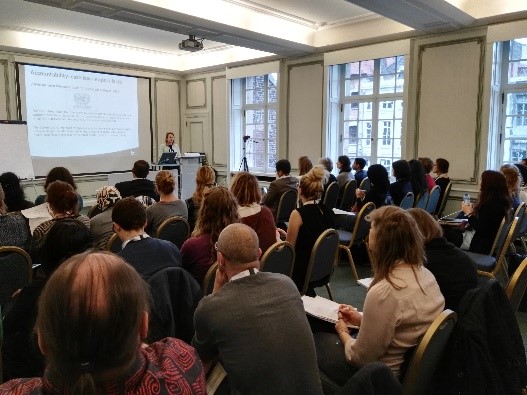 The purpose of the conference was to present research results in the field of SRHR, discuss their implications for policy and link researchers with policy makers. The conference was open to all researchers, policy makers, students and others interested in SRHR policy research and about 120 people coming from 23 different countries from around the world were registered. The purpose of the conference was to present research results in the field of SRHR, discuss their implications for policy and link researchers with policy makers. The conference was open to all researchers, policy makers, students and others interested in SRHR policy research and about 120 people coming from 23 different countries from around the world were registered.The conference was abstract-driven and focused on 6 main themes: 1) adolescent SRHR, 2) abortion, contraception and family planning, 3) gender, rights and interpersonal violence, 4) rights and policy perspectives, 5) SRHR monitoring and evaluation, 6) maternal health. A short video illustrating the atmosphere during these two days can be found here: http://www.ugent.be/anser/en/news-events/news/conference2016 |
Joint research meeting with ICRH Kenya team and Aga Khan Research team  On December 14th 2016, two important research organisations in Coastal area in Mombasa, Kenya, met for the first time. On December 14th 2016, two important research organisations in Coastal area in Mombasa, Kenya, met for the first time.During the meeting, ICRH Kenya and Aga Khan Research Team explored possibilities for cooperation and for joining forces in reproductive health research, capacity building and development projects. ICRH Kenya, represented by Dr Griffins Manguro and Mary Thiongo, welcomed the Aga Khan University Research Unit represented by Dr Amyn Lakhani, Lucy Nyaga, Rachel Odhiambo and Prof Marleen Temmerman, Director of the AKU Centre of Excellence In Women and Child Health and Founding Director of ICRH. |
Female Genital Mutilation On February 27-28, the results of the project ‘Towards a better estimation of prevalence of female genital mutilation in the European Union’ will be presented during a conference in Brussels. The project is funded by the European Commission-Daphne programme. More information on the programme and venue of the conference can be found at http://icrhb.org/news/invitationfgmprevmeeting. |
| ICRH PEOPLE |
Syed Khurram Azmat PhD supervisors were prof. Marleen Temmerman and dr. Moazzam Ali. The full thesis can be downloaded HERE. |
Anna Galle 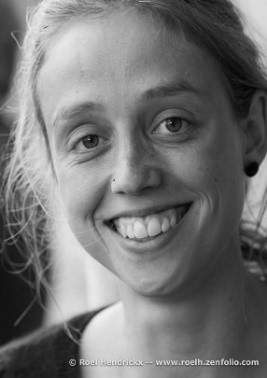 Anna Galle was awarded a VLADOC-PhD scholarship, financed by VLIR-UOS. Anna Galle was awarded a VLADOC-PhD scholarship, financed by VLIR-UOS. Within the framework of her PhD scholarship, Anna will work four years on a research project aimed at examining the role of men during pregnancy in Mozambique, and at exploring ways in which positive male involvement can contribute to better health outcomes for mother and baby. Anna is not exactly ‘new’ at ICRH. The first time she entered ICRH buildings was during her Master studies in Health Promotion in 2014. For her thesis she conducted a descriptive study about satisfaction of women during pregnancy at the women’s clinic with An-Sofie Van Parys as her supervisor. After graduating, she worked at ICRH as an intern/junior researcher in ICRH. During the last part of her internship she did fieldwork in Mozambique. |
| PUBLICATIONS |
Sex workers in Kenya A mixed-methods study on predictors and consequences of unintended pregnancies for female sex workers in Mombasa, Kenya. Female sex workers (FSW) have high rates of unintended pregnancy, sexually transmitted infections including HIV, and other adverse sexual and reproductive health outcomes. Few services for FSWs include contraception. This mixed-methods study aimed to determine the rate, predictors and consequences of unintended pregnancy among FSWs in Mombasa, Kenya. A prospective cohort study of non-pregnant FSWs was conducted. Quantitative data were collected quarterly, including a structured questionnaire and testing for pregnancy and HIV. Predictors of unintended pregnancy were investigated using multivariate logistic regression. Qualitative data were gathered through focus group discussions and in-depth interviews with FSWs who became pregnant during the study, and interviews with five key informants. These data were transcribed, translated and analysed thematically. Four hundred women were enrolled, with 92% remaining in the cohort after one year. Fifty-seven percent reported using a modern contraceptive method (including condoms when used consistently). Over one-third (36%) of women were using condoms inconsistently without another method. Twenty-four percent had an unintended pregnancy during the study. Younger age, having an emotional partner and using traditional or no contraception, or condoms only, were independent predictors of unintended pregnancy. Women attributed pregnancy to forgetting to use contraception and being pressured not to by clients and emotional partners, as well as "bad luck". They described numerous negative consequences of unintended pregnancy. Modern contraceptive uptake is surprisingly low in this at-risk population, which in turn has a high rate of unintended pregnancy. The latter may result in financial hardship, social stigma, risk of abandonment, or dangerous abortion practices. FSWs face considerable barriers to the adoption of dual method contraceptive use, including low levels of control in their emotional and commercial relationships. Reproductive health services need to be incorporated into programs for sexually transmitted infections and HIV, which address the socially-determined barriers to contraceptive use. Luchters S, Bosire W, Feng A, Richter ML, King'ola N, Ampt F, Temmerman M, Chersich MF. "A Baby Was an Added Burden": Predictors and Consequences of Unintended Pregnancies for Female Sex Workers in Mombasa, Kenya: A Mixed-Methods Study. PLoS One. 2016 Sep 30;11(9):e0162871. doi: 10.1371/journal.pone.0162871. |
Age differences and HIV A study into the link between age differences between sexual partners, behavioural and demographic correlates, and HIV infection on Likoma Island, Malawi. Patterns of age differences between sexual partners - "age-mixing" - may partially explain the magnitude of HIV epidemics in Sub-Saharan Africa. However, evidence of age-disparity as a risk factor for HIV remains mixed. Data from a socio-centric study of sexual behaviour in Malawi were used to quantify the age-mixing pattern and to find associations between relationship characteristics and age differences for 1,922 participants. Three age difference measures were explored as predictors of prevalent HIV infection. For each year increase in male participant age, the average age difference with their partners increased by 0.26 years, while among women it remained approximately constant around 5 years. Women in the study had larger within-individual variation in partner ages compared to men. Spousal partnerships and never using a condom during sex were associated with larger age differences in relationships of both men and women. Men who were more than five years younger than their partners had 5.39 times higher odds (95% CI: 0.93-31.24) of being HIV-infected than men 0-4 years older. The relationship between HIV-infection and age-asymmetry may be more complex than previously described. The role that women play in HIV transmission should not be under-estimated, particularly in populations with large within-individual variation in partner ages. Beauclair R, Helleringer S, Hens N, Delva W. Age differences between sexual partners, behavioural and demographic correlates, and HIV infection on Likoma Island, Malawi. Sci Rep. 2016 Nov 2;6:36121. doi: 10.1038/srep36121. |
Translating research into policy Practical lessons for bringing policy-makers on board in sexual and reproductive health research. The need to translate research into policy, i.e. making research findings a driving force in agenda-setting and policy change, is increasingly acknowledged. However, little is known about translation mechanisms in the field of sexual and reproductive health (SRH) outside North American or European contexts. This paper seeks to give an overview of the existing knowledge on this topic as well as to document practical challenges and remedies from the perspectives of researchers involved in four SRH research consortium projects in Latin America, sub-Saharan Africa, China and India. A literature review and relevant project documents were used to develop an interview guide through which researchers could reflect on their experiences in engaging with policy-makers, and particularly on the obstacles met and the strategies deployed by the four project consortia to circumvent them. The findings confirm current recommendations on an early and steady involvement of policy-makers, however they also suggest that local barriers between researchers and policy-making spheres and individuals can represent major hindrances to the realization of translation objectives. Although many of the challenges might be common to different contexts, creating locally-adapted responses is deemed key to overcome them. Researchers’ experiences also indicate that - although inevitable - recognizing and addressing these challenges is a difficult, time- and energy-consuming process for all partners involved. Despite a lack of existing knowledge on translation efforts in SRH research outside North American or European contexts, and more particularly in low and middle-income countries, it is clear that existing pressure on health and policy systems in these settings further complicates them. This article brings together literature findings and researchers’ own experiences in translating research results into policy and highlights the major challenges research conducted on sexual and reproductive health outside North American or European contexts can meet. Future SRH projects should be particularly attentive to these potential obstacles in order to tailor appropriate and consistent strategies within their existing resources. Aurore Guieu, Wei-Hong Zhang, Yves Lafort, Peter Decat, Sara De Meyer, Shuchen Wang, Birgit Kerstens and Els Duysburgh. Practical lessons for bringing policy-makers on board in sexual and reproductive health Research. BMC Health Serv Res. 2016 Nov 11;16(1):649. |
HPV vaccination Uptake of the human papillomavirus vaccine in Kenya: testing the health belief model through pathway modelling on cohort data. Many studies investigate HPV vaccine acceptability, applying health behaviour theories to identify determinants; few include real uptake, the final variable of interest. This study investigated the utility of the Health Belief Model (HBM) in predicting HPV vaccine uptake in Kenya, focusing on the importance of promotion, probing willingness to vaccinate as precursor of uptake and exploring the added value of personal characteristics. Longitudinal data were collected before and after a pilot HPV vaccination program in Eldoret among mothers of eligible girls (N = 255). Through pathway modelling, associations between vaccine uptake and the HBM constructs, willingness to vaccinate and adequate promotion were examined. Adequate promotion was defined as a personal evaluation of promotional information received. Finally, baseline cervical cancer awareness and socio-demographic variables were added to the model verifying their direct, mediating or moderating effects on the predictive value of the HBM. Perceiving yourself as adequately informed at follow-up was the strongest determinant of vaccine uptake. HBM constructs (susceptibility, self-efficacy and foreseeing father's refusal as barrier) only influenced willingness to vaccinate, which was not correlated with vaccination. Baseline awareness of cervical cancer predicted uptake. The association between adequate promotion and vaccination reveals the importance of triggers beyond personal control. Adoption of new health behaviours might be more determined by organizational variables, such as promotion, than by prior personal beliefs. Assessing users' and non-users' perspectives during and after implementing a vaccination program can help identifying stronger determinants of vaccination behaviour. Vermandere H, van Stam MA, Naanyu V, Michielsen K, Degomme O, Oort F. Uptake of the human papillomavirus vaccine in Kenya: testing the health belief model through pathway modeling on cohort data. Global Health. 2016 Nov 15;12(1):72. |
SRH services utilization by female sex workers Results from a cross-sectional survey in India, Kenya, Mozambique and South Africa. Female sex workers (FSWs) are extremely vulnerable to adverse sexual and reproductive health (SRH) outcomes. To mitigate these risks, they require access to services covering not only HIV prevention but also contraception, cervical cancer screening and sexual violence. Gaps in service utilization were identified in four different cities, with the aim to develop context-specific intervention packages to improve uptake. A cross-sectional survey was conducted, as part of the baseline assessment of an implementation research project. FWSs were recruited in Durban, South Africa (n = 400), Mombasa, Kenya (n = 400), Mysore, India (n = 458) and Tete, Mozambique (n = 308), using respondent-driven sampling (RDS) and starting with 8-16 'seeds' identified by the peer educators. FSWs responded to a standardised interviewer-administered questionnaire about the use of contraceptive methods and services for cervical cancer screening, sexual violence and unwanted pregnancies. RDS-adjusted proportions and surrounding 95% confidence intervals were estimated by non-parametric bootstrapping, and compared across cities using post-hoc pairwise comparison tests with Dunn-Šidák correction. Current use of any modern contraception ranged from 86.2% in Tete to 98.4% in Mombasa (p = 0.001), while non-barrier contraception (hormonal, IUD or sterilisation) varied from 33.4% in Durban to 85.1% in Mysore (p < 0.001). Ever having used emergency contraception ranged from 2.4% in Mysore to 38.1% in Mombasa (p < 0.001), ever having been screened for cervical cancer from 0.0% in Tete to 29.0% in Durban (p < 0.001), and having gone to a health facility for a termination of an unwanted pregnancy from 15.0% in Durban to 93.7% in Mysore (p < 0.001). Having sought medical care after forced sex varied from 34.4% in Mombasa to 51.9% in Mysore (p = 0.860). Many of the differences between cities remained statistically significant after adjusting for variations in FSWs' sociodemographic characteristics. The use of SRH commodities and services by FSWs is often low and is highly context-specific. Reasons for variation across cities need to be further explored. The differences are unlikely caused by differences in socio-demographic characteristics and more probably stem from differences in the availability and accessibility of SRH services. Intervention packages to improve use of contraceptives and SRH services should be tailored to the particular gaps in each city. Lafort Y, Greener R, Roy A, Greener L, Ombidi W, Lessitala F, Skordis-Worrall J, Beksinska M, Gichangi P, Reza-Paul S, Smit JA, Chersich M, Delva W. Sexual and reproductive health services utilization by female sex workers is context-specific: results from a cross-sectional survey in India, Kenya, Mozambique and South Africa. Reprod Health. 2017 Jan 19;14(1):13. doi: 10.1186/s12978-017-0277-6. |


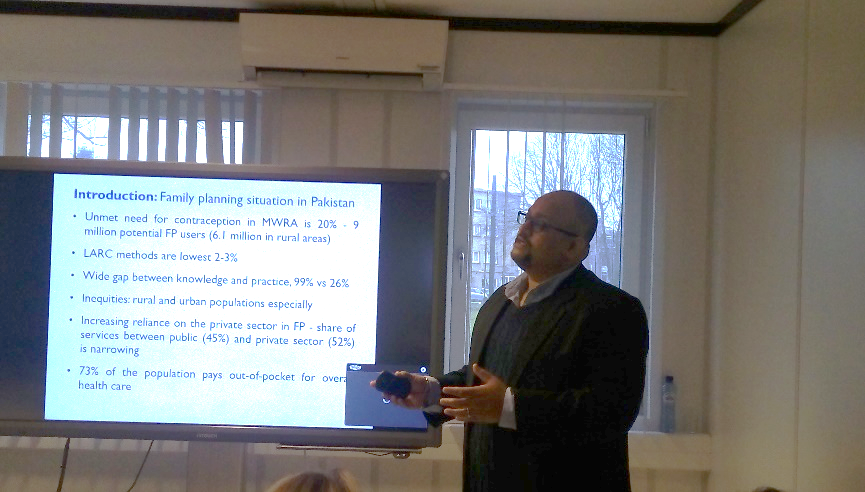 an and master in public health, who has a lot of experience in leading large scale research projects in the field of different models of reproductive health services delivery in Pakistan. His PhD thesis, entitled ‘Models to accelerate modern family planning /contraceptive services access, uptake and quality in underserved populations in rural Pakistan’, demonstrates that integrated health financing models using social franchising not only increase the uptake of modern FP services in underserved areas but also facilitate the long-term continuity of modern FP methods, as well as promoting method-specific switching behaviour. Such models should be considered for adoption into government programmes and in public-private partnerships aimed at the provision of modern family planning/contraceptive services at the community level.
an and master in public health, who has a lot of experience in leading large scale research projects in the field of different models of reproductive health services delivery in Pakistan. His PhD thesis, entitled ‘Models to accelerate modern family planning /contraceptive services access, uptake and quality in underserved populations in rural Pakistan’, demonstrates that integrated health financing models using social franchising not only increase the uptake of modern FP services in underserved areas but also facilitate the long-term continuity of modern FP methods, as well as promoting method-specific switching behaviour. Such models should be considered for adoption into government programmes and in public-private partnerships aimed at the provision of modern family planning/contraceptive services at the community level.